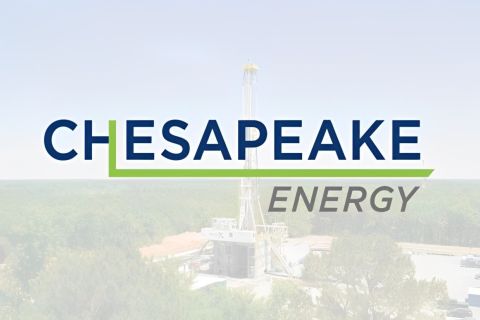It seems lately that predicting the price of natural gas in Pennsylvania is something akin to filling out the annual office NCAA basketball bracket. We should all have low expectations for success. Producers, royalty owners and marketers should take heart. The last six months in Pennsylvania have created a natural gas market in need of numerical reckoning.
In the late 1980s and early 1990s, I was involved in supplying natural gas to GE industrial plants throughout the northeast U.S. Back then, we had two options for gas supply. We purchased 90% of our gas in the offshore Gulf Coast, and we augmented that supply with Appalachian gas supplies. That was long before the word “Marcellus” was known.
In those early days of gas marketing, the price, or basis differential, between the Northeast consumption area and the Gulf Coast production area was as predictable as the sun rising. We would see a 50-cent to 70-cent basis differential (positive to the Nymex) in the winter and a 40-cent-plus basis differential in the summer months. That price differential was predicated on seasonal demand and actual pipeline transportation charges.
The new world
Tudor, Pickering, Holt & Co. recently published the report, “The Last Days of the Northeast Premium.” Thanks to the shale revolution, the Northeast is now a consumption and production area. In fact, thanks to the Marcellus Shale, the Northeast is becoming a net exporter of natural gas.
Since 2007, gas production in the Marcellus has grown from 1.2 billion cubic feet per day (Bcf/d) to 14 Bcf/d. In the first half of 2013, Marcellus gas production grew by 1 Bcf/d. More than 8 Bcf/d of Marcellus-area gas processing capacity has/will come into service between March 2013 and September 2015.
Some estimates put the Marcellus reserves at 200 trillion cubic feet. I’d say it’s safe to say that the “Northeast premium” is gone for good.
But there are pockets of discontent. There are a number of areas in Pennsylvania where productive capacity exceeds pipeline export capacity, creating lower prices for producers.
With all that growth in production, discussions of interstate pipeline capacity utilization have been the hot topic for Pennsylvania producers and markets the last 18 months.
One of the critical hubs in the Northeast is found near Leidy, Pa. Some people identify this area as an on-ramp to the city of New York. Marcellus dry gas production has overwhelmed the city’s demand. Parts of Pennsylvania are experiencing what the Rocky Mountain production area lived through during the mid-2000s—a basis differential blowout.
There are many examples. In February, three index price points located near the eastern border of Pennsylvania posted an average price per million (MM)Btu of $16. But the Leidy Hub index posted at $5.43/MMBtu.
One company with production near Leidy is currently receiving a Nymex Henry Hub gas price—less $2/MMBtu. Not only was that unthinkable back in the 1980s and 1990s, it would have been impossible to believe just five years ago.
Regional pipeline-constrained areas in Pennsylvania have created what one marketer recently called “the cheapest natural gas prices in the industrialized world.”
Once again, a pipeline firm shipper who had the good fortune (or insight) to own pipeline capacity can charge an economic rent that is far above the value of underlying firm transportation costs. That economic rent takes the form of low-ball offers to stranded gas producers. The producer’s only other option is to shut in production and wait for additional pipeline capacity to be built—an option that may take two years or more.
Plaintiff attorneys salivate
So, who cares about this Marcellus Madness?
Royalty owners care. A royalty owner’s concern about the fair deduction of post-production costs in a market environment with sub-Henry Hub prices is a recipe for royalty-owner lawsuits. A direct result of those low-ball offers will be what I call the “The Plaintiff Attorney and Royalty Auditor Employment Act.” I predict a brisk business during the next five years for companies that audit royalty payments—and plaintiff attorneys that sue producers for underpayment of royalty.
The Commonwealth of Pennsylvania is proud of its 1979 Guaranteed Minimum Royalty Act. That law requires (despite what an oil and gas lease might say) the payment of a minimum royalty equal to 12.5%. But the law also allows for a deduction of “postproduction costs.”
Chesapeake Energy Corp. recently agreed to a $7.5 million settlement in a case in which it was accused of exorbitant deductions related to post-production costs.
That royalty payment confusion, or Marcellus Madness, could result in years of lawsuits where royalty owners and plaintiff attorneys file actions based on a fundamental misunderstanding of market forces. Only additional pipelines and an increase in regional demand will solve this problem. Bring on the pipes!
Recommended Reading
Chesapeake Stockpiles DUCs as Doubts Creep in Over Southwestern Deal
2024-05-02 - Chesapeake Energy is stockpiling DUCs until demand returns through growth from LNG exports, power generation and industrial activity.
WTI Delivered to East Houston Hits Highest Premium in Nearly Three Years
2024-05-01 - Oil takeaway capacity from the Permian Basin will tighten next month due to scheduled pipeline maintenance.
CPS Closes $785MM Deal for Talen Energy’s Texas NatGas Plants
2024-05-01 - CPS Energy has acquired all assets associated with the 897-MW Barney Davis and 635-MW Nueces Bay natural gas plants in Corpus Christi, Texas, and the 178-MW natural gas plant in Laredo, Texas.
Wirth: Chevron Won’t Put ‘New Capital into Venezuela’
2024-05-01 - California-based Chevron Corp. doesn’t plan on allocating more capex into its operations in Venezuela even though it still has U.S. approval to operate there, despite Washington sanctions.
Tinker Associates CEO on Why US Won’t Lead on Oil, Gas
2024-02-13 - The U.S. will not lead crude oil and natural gas production as the shale curve flattens, Tinker Energy Associates CEO Scott Tinker told Hart Energy on the sidelines of NAPE in Houston.




